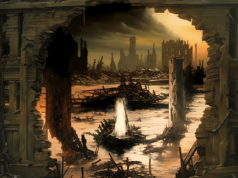
The global construction boom has tripled demand for sand and gravel over the past two decades. The environmental damage that arises as a result is large according to the United Nations.
Forty to fifty billion tons of sand and gravel are mined and built worldwide every year. This makes this raw material – in terms of volume – the second largest subsidized and traded resource after water. The United Nations Environment Program (UNEP) refers to this in a report now presented in Geneva.
The problem: Because lifestyle habits were changing, world population was growing, and more and more people were living in cities, more and more people were building. And with sand and gravel. As a result, their demand is increasing – estimates are increasing by more than five percent annually.
Fight against illegal mining
The excessive mining of sand has serious consequences for the environment, according to UNEP. „We are processing the sand faster than we can dismantle it responsibly,“ warns Deputy Executive Director of the UN organization, Joyce Msuya. According to the report, the extraction of sand and gravel along coastal and river landscapes leads to increased leaching and flooding. This has a negative effect on ecosystems, such as the stocks of crabs.
The United Nations Environment Program therefore recommends cross-border uniform regulations in the fight against irresponsible and illegal mining and a commitment to more sustainability. The report, which has just been published, aims to initiate an international discussion on how to deal with the important resource of sand.



